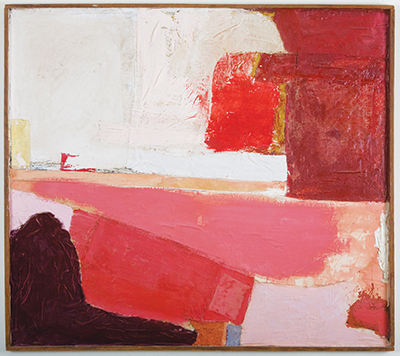“The League is still current 140 years later,” says Ira Goldberg, executive director of the Art Students League of New York, on the occasion of the organization’s 140th anniversary. “The drive to understand and learn the practices that go back millennia has not waned.” The League, the crucible from which such a rich stream of creative endeavor has emerged — Pollock, O’Keeffe, Eakins, Rothko, Rauschenberg, Ai Weiwei, to name a few — is the analog component to today’s increasingly digital art world, and Goldberg stresses that it continues stronger than ever in its commitment to offering the best in art instruction for the professional and the amateur alike. Goldberg spoke with Antiques and The Arts Weekly about what’s in store at 215 West 57th Street and beyond.
Q. How does your organization plan to celebrate its 140th year?
A. This year we’re going to have a big party on October 17. We’re going to close the building to classes for the anniversary celebration. We’re selling tickets to anyone who wants to come. We’re not charging what would normally be charged for a gala — no $500 or $1,000 tickets. We’re going to have activities, a sketch party, we’re going to open up our back studios, which originally was the Vanderbilt Gallery. It’ll be a lot of fun.
Q. Clearly, 140 years ago photography was just getting its start as a fine art and the digital realm was as yet undiscovered. How have digital technologies changed the way art is created and accessed?
A. We don’t teach digital art per se, but we have workshops related to such topics as building websites and so on. We want to keep artists up to date with modern technology. At the same time, we take a strong position that if you have a fundamental understanding of drawing or painting using the artistic practice in a traditional, manual way, it will better prepare you to be creative in using digital technology.
Q. What was the impetus for “On the Front Lines,” a current exhibition of art by military veterans, including Robert Rauschenberg, Donald Judd, Alfred Leslie and Knox Martin?
A. We want to honor the veterans who came through the League on the GI Bill in 1946, as well as all the veterans who are coming through today. The original wave of veterans really changed the organization — at the time they made up 90 percent of the student population. We were really on the verge of having to close, so for all intents and purposes, they kept the League alive.

Robert Rauschenberg, untitled, 1949, collage of fabric and paint on panel, 44 by 49½ inches. Courtesy of a private collection.
Q. The League is also promoting public art, isn’t it?
A. Yes, for the last four years in our Model to Monument program, a juried program, we’ve been teaching the entire process of making public sculpture, which goes from the original conception to the development of the idea, the fabrication, the review process, safety and engineering issues and finally the piece’s installation. It’s a nine-month, boot camp-like experience, but the students walk away with a strong understanding of the entire process. Seven individuals from the 2015 program now have sculptures that were recently unveiled in Riverside Park and a collaborative piece that goes into Van Cortlandt Park, Bronx.
Q. In your message on the League’s website, you say “One must be willing to fail in order to succeed.” What defines “failure” and “success,” respectively, in the art world?
A. [Laughs] A lot of people would define success as making money. About 20 years ago I was director of a children’s summer art class. Their age ranges were something like 8–12. Many of the older ones were involved with copying comic book art. They would spend hours to get these things right. I was surprised to see one boy tear up what he did, and I asked him why. He said, “I messed up.” And I said, “You’re supposed to mess up.” It just sort of illustrates the idea that trying to live up to the definition of what an artist is can get in the way of the learning process. You have to let yourself drift sometimes, wonder what to do next, take chances. Put something down and see if it works. Rembrandt, Titian — all of them — they corrected things, you can see where they painted over certain areas.
Q. Besides leading a storied institution, do you have a personal connection to art? And, if so, what?
A. I came here as a student in 1979 and I studied drawing for three years, then I started taking painting classes and now I paint. My style? If you had to put a name on it, probably somewhat Impressionistic — landscape, portraiture, still life. I’m not hooked on any one particular genre or subject. As one instructor here once said, “The subject of art is art.”


